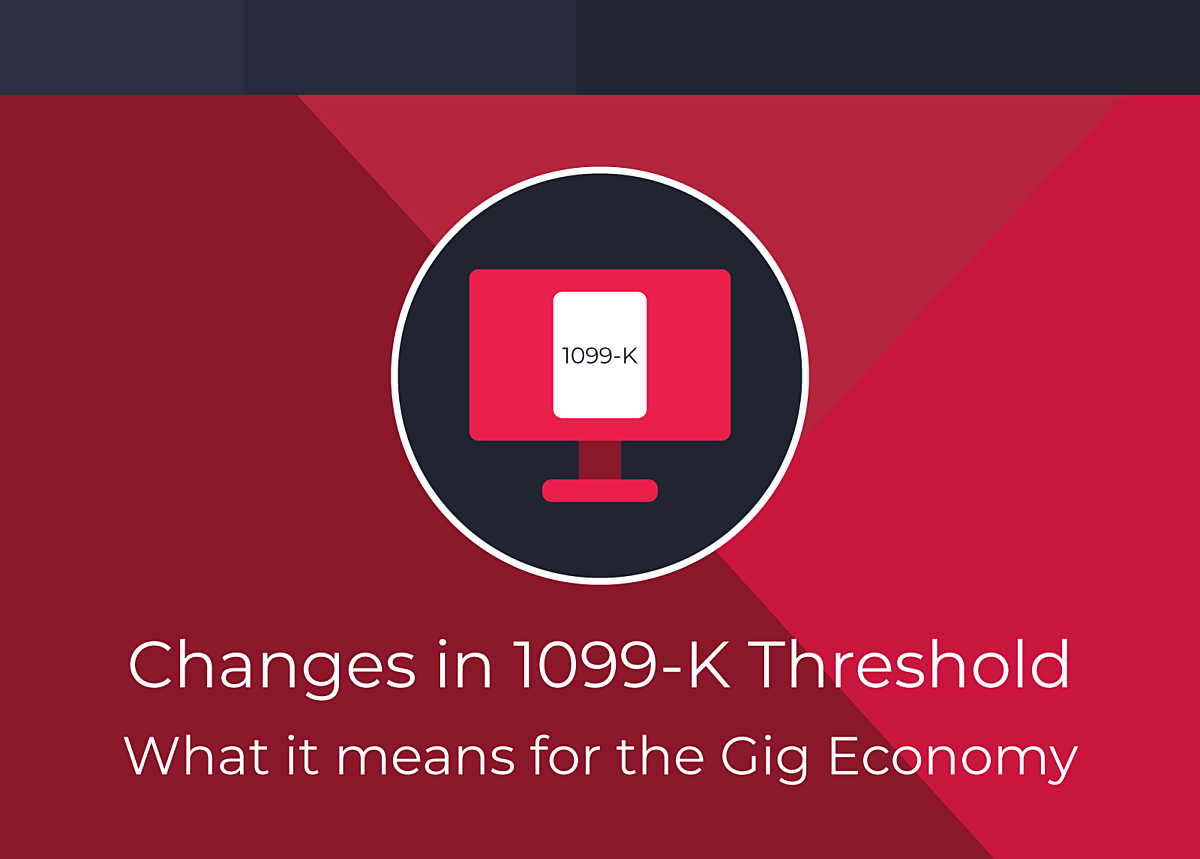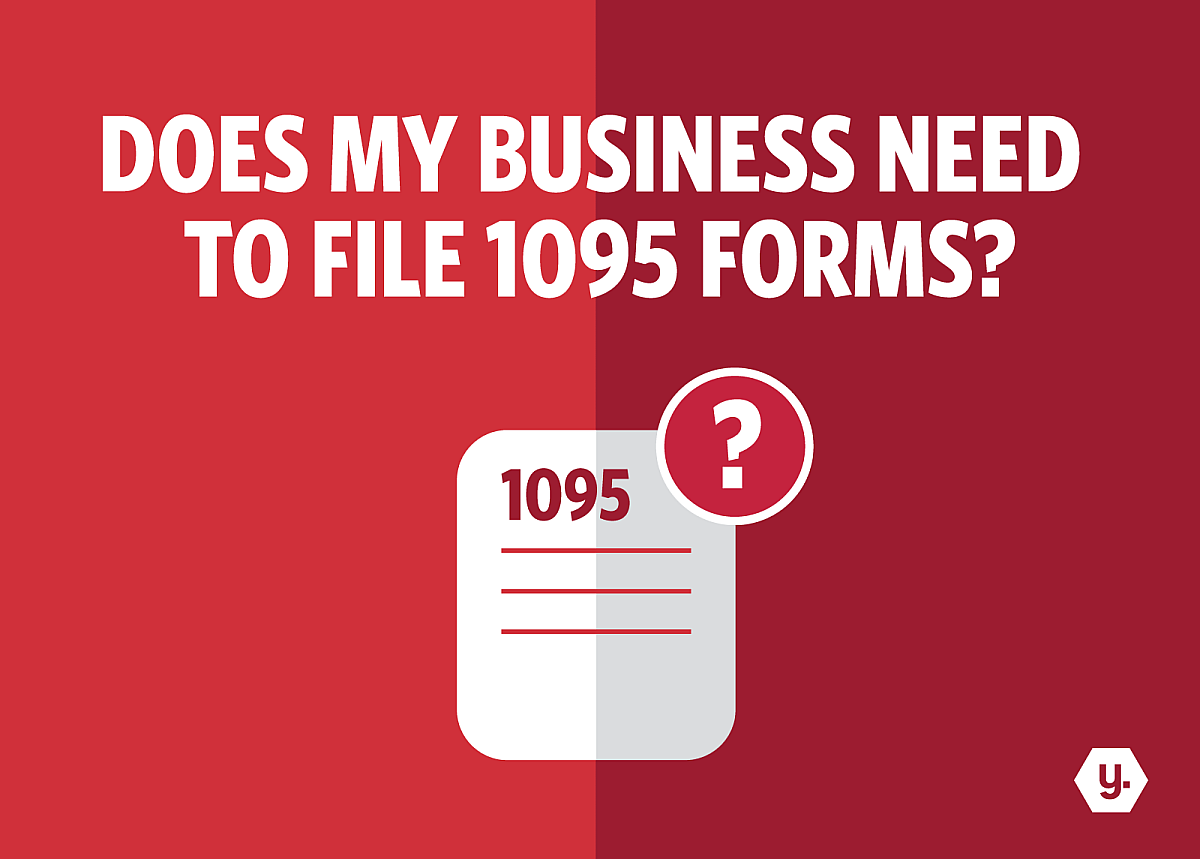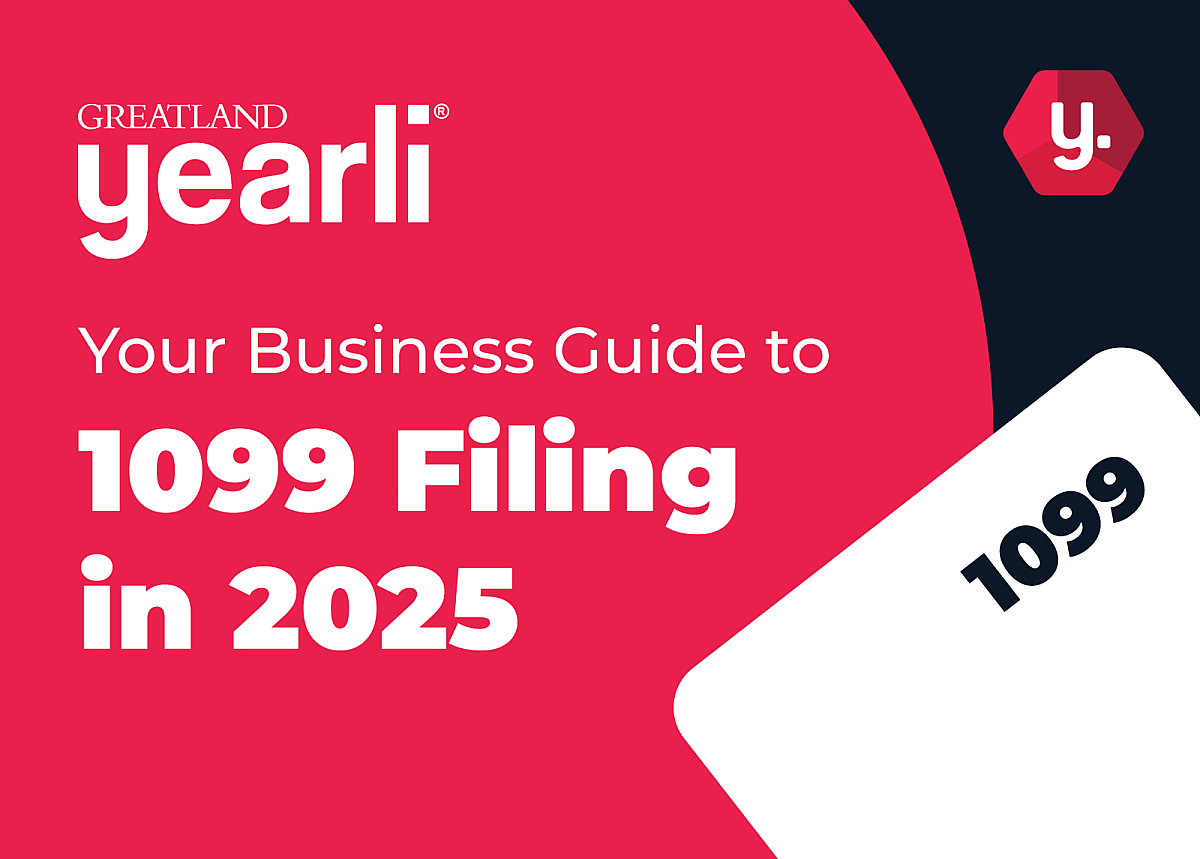
Changes in 1099-K Threshold: What it Means for the Gig Economy
The American Rescue Plan Act of 2021 is intended to combat the economic and health impacts of the COVID-19 pandemic but within this $1.9 trillion stimulus package is a provision that will spell significant change for third-party settlement organizations and many gig workers.
The Act, which was signed into law March 2021, substantially reduces the reporting threshold associated with Form 1099-K from $20,000 in aggregate payments and 200 transactions to a threshold of $600 in aggregate payments, with no minimum transaction requirement. Form 1099-K is used to report payment card and third-party network transactions.
This change will become effective in 2022 and will impact the January 2023 filings.
Why the change? In short, the IRS is looking to reduce the tax gap through such measures as voluntary taxpayer compliance and information reporting. The tax gap is the difference between what taxpayers owe and what they pay timely.
The most recent IRS estimates of the tax gap relies on data from 2011 to 2013 and puts the average gross tax gap at $441 billion per year. Furthermore, a study by economists Natasha Sarin and Lawrence Summers projects that, between 2020 and 2029, the IRS will fail to collect nearly $7.5 trillion of taxes it is due.
Self-employment income is frequently underreported for income tax purposes, and, as noted by the Treasury Inspector General for Tax Administration (TIGTA), IRS tax gap studies estimate that when third parties do not provide information to the IRS, 63 percent of income is misreported. With the rise of the gig economy (think: Uber, Etsy, Lyft, etc.) in recent years, it is “likely that self-employment tax underreporting will continue to be a growing problem if not addressed,” the TIGTA stated.
“The purpose of lowering the threshold is to increase voluntary compliance. Tax gap studies through the years have consistently demonstrated that third-party reporting significantly raises voluntary compliance. So, by lowering the threshold, more transactions are now subject to reporting,” said Janice Krueger, subject matter expert for Greatland.
What it Means for Gig Workers
The change could be an unwelcome surprise for gig workers, especially if they haven’t been closely tracking their tax liability.
“The gig economy is a labor market based on temporary, flexible, freelance jobs where an individual earns income by providing on-demand services or goods. Income earned from the gig economy is taxable income whether a gig worker receives an information return or not. So, gig work is a certain activity a person does to earn income, often through an app or a digital platform,” said Krueger. “With the COVID-19 outbreak many individuals pursued other ways of earning income, especially if their current job was impacted by the pandemic.”
To further explain, consider the following example: Sally earns income as a driver through a ride-sharing platform. Currently, Sally would have to both earn at least $20,000 in payment for services and provide a minimum of 200 rides in a year before the online platform business, or third-party settlement organization (TPSO), would have an information reporting obligation. In such cases, the TPSO is required to send both Sally and the IRS a Form 1099-K listing the total amount of payments made during the year.
Effective in 2022, Sally would have to earn only $600 in payment for services, with no minimum of rides in a year, before the TPSO would have an information reporting obligation.
Under the new law, many more individuals will be receiving Form 1099-K reporting income from gig work, and accurately tracking and recording their tax liability (i.e., earned income and incurred expenses) will be especially important because it will need to be reported on their tax return.
“The Form 1099-K reports the gross amount of a reportable payment. It doesn’t include any adjustments for credits, cash equivalents, discounts, and so forth. The dollar amount of each transaction is determined on the date of the transaction,” added Krueger. “The other thing to note is if a gig worker is classified as an employee, for example, the individual will receive a W-2 from the employer. So, each of those gig workers needs to be classified first as whether they are an employee or an independent contractor.”
Impact on TPSOs
The change will have a major impact on TPSOs of goods and services. Not only does it significantly increase the number of Form 1099-Ks they will be required to file in a given year, but many will be required to take a closer look at their technology and processes to ensure compliance.
As explained by PwC, “The reduction in the reporting threshold will affect the onboarding practices of many TPSOs, specifically the process for collecting TINS [taxpayer identification numbers] that previously were based on higher thresholds. Failure to recognize the need for collecting TINs earlier in the TPSO relationship could expose organizations to excessive backup withholding obligations or liability if proper information is not obtained or the withholding is missed.”
Echoing the sentiment, Krueger said, “There’s going to be significantly more entities receiving 1099-K information. Third-party settlement organizations are going to be sending out many more 1099-Ks than they have in the past. So, it is important that when they onboard an entity, it should be a standard practice to obtain a taxpayer identification number upfront since this number is required to be reported on the 1099-K. If an entity provides incorrect taxpayer identification number information, then the third-party settlement organization would need to request correct information and to begin backup withholding if a correct TIN is not received.”
When a name and TIN combination doesn’t match the IRS database, it is the TPSO’s responsibility to then notify the entity via a B Notice (backup withholding notice). Unfortunately, rectifying the issue can prove time-consuming and frustrating for TPSOs. Furthermore, ignoring the mismatch can lead to penalties for the TPSO.
Take Action
Fortunately, there are steps that TPSOs can take to help ease the burden of ensuring compliance.
“It is essential to find a strategy that fully supports all reporting requirements and lessens the burden of annual wage and income reporting. Not only is it critical to find a 1099-K filing solution, but it’s also important find a W-2 and 1099-NEC solution in the event that workers are classified as employees or independent contractors not being paid by payment cards through a TPSO,” advised Krueger.
Implementing a comprehensive online 1099 and W-2 reporting platform, like Yearli.com by Greatland, can help TPSOs ensure they have access to a streamlined and compliant process for meeting all of these filing requirements.
It is important to note that, while the reduction of the reporting threshold associated with Form 1099-K is a federal threshold, there are Form 1099 filing requirements that vary by state and some states have already adopted a lower 1099-K threshold.
Yearli.com has a year-round compliance staff that remains in close contact with federal and state agencies to help ensure compliance at both the federal and state levels. It provides guidance to users on state reporting requirements and informs them of the best method to complete their filing obligations, as well as offers federal e-filing and a print and mail service for recipient copies.
Yearli.com also provides an automated TIN matching service, which can help TPSOs ensure that, when onboarding, names and TINs match the IRS database. Getting the name and TIN from an entity upfront and leveraging an automated TIN matching service is perhaps the best way for TPSOs to avoid backup withholding. Should a TPSO be subject to backup withholding, Yearli.com also supports the filing of Form 945 to the IRS.
The reduction of the reporting threshold associated with Form 1099-K will no doubt have a significant impact on the gig economy but, with the right tools and resources in place, TPSOs can alleviate the stress of ensuring compliance.
Latest News
-
 November 25, 2025
November 25, 2025New Alternative Furnishing Method for Forms 1095-B and 1095-C Comes with Complexities
The IRS has updated the Affordable Care Act (ACA) reporting process for Forms 1095-B and 1095-C. These changes aim to reduce administrative costs and simplify reporting, but they also create new compliance challenges for employers and health insurance providers.Read More -
 October 8, 2025
October 8, 2025Your Business Guide to 1099 Filing in 2025: Deadlines and Compliance Tips with Yearli
Businesses must prepare for 2025 IRS 1099 filing by understanding key deadlines for Forms 1099-NEC and 1099-MISC and leveraging e-filing tools like Yearli to stay compliant. This guide outlines important dates, recent IRS updates, and practical tips to avoid penalties and streamline the filing process.Read More -
December 30, 2024
Understanding Form 1099-DA: A Comprehensive Guide to Filing for Digital Asset Transactions
As the use of digital assets like cryptocurrencies and non-fungible tokens (NFTs) continues to grow, so does the need for clear tax reporting guidelines. To address this, the IRS has introduced Form 1099-DA, which will be required starting in 2025.Read More
